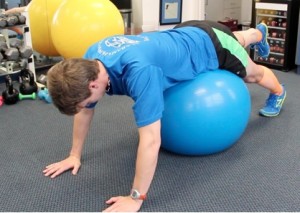Injury is a reason to exercise, not an excuse to avoid it
Just because it’s the Holidays doesn’t mean you should put fitness on the back burner. There’s a lot you can be doing between now and when you intend your New Year’s resolutions to kick in.

If it’s an injury that’s been holding you back, here’s something you might want to consider. We encourage our patients to view an injury not as the reason they don’t exercise, but as the reason they must.
The way we help our patients back to total body strength is with a program adapted from CrossFit, the fitness program started in Santa Barbara, California. Not only has CrossFit significantly influenced how fitness is defined and obtained today, it has also made a substantial influence on how we rehabilitate patients from orthopedic injuries.
The definition of fitness in the CrossFit world is strength, agility, balance, proprioception, cardiovascular/respiratory endurance, stamina, flexibility, power, coordination, and accuracy.
Unfortunately, each of these physical skills is detrimentally impacted in most orthopedic injuries; whether it is a knee, shoulder, ankle or back injury. At the time of injury the affected body part is partially disabled but during treatment, the rest of the body is often also affected, especially if weight bearing is prohibited.
What tends to happen, especially in chronic injuries that lead to arthritis, is that the person favors a joint, limits their motion, compensates by using other body parts and their overall fitness declines.
To address this, doctors have often prescribed physical therapy for the injured joints. Yet therapy usually focuses just on the site of injury and traditionally ends when that particular part of the body is at least partially healed. It’s not designed to get a person back to total body fitness and strength.
That’s why in 1995, we made some changes to how we went about helping injured people back to full fitness. Just as the old rhyme says, the knee bone is connected to the hip bone, the hip bone is connected to the back bone and the back bone is connected to the shoulder bone etc. etc. and so we recognized that recovery from injury was not sufficient to protect the person from further injury.

We hired an early CrossFit leader, Eva Twardokens, to come and teach our physical therapy team the CrossFit techniques of efficient training. We modified their standard CrossFit program to suit an injured patient and the rehabilitation environment and developed a total body recovery program with the goal of returning people to a state “better” than they were before they were injured. We defined better as “fitter, faster and stronger” and encouraged our patients to see themselves as athletes in training and not patients in rehab.
The outcome of this shift has been that patients now see that their recovery from injury is a lifelong activity. By using their injury as an incentive to develop an efficient fitness program, they achieve a better outcome and we have the sense of accomplishment that comes from not just helping a patient heal but from helping them improve their lives.
